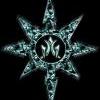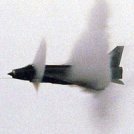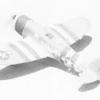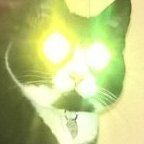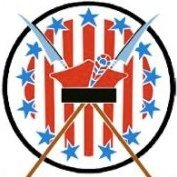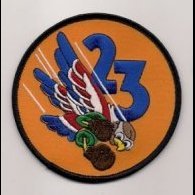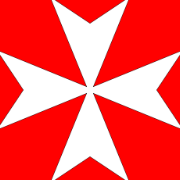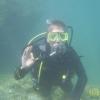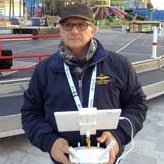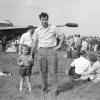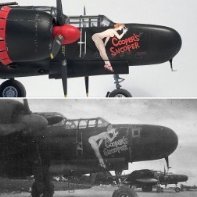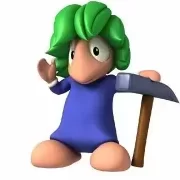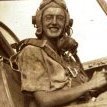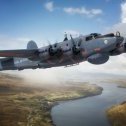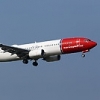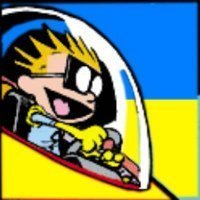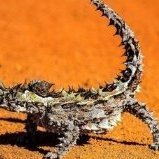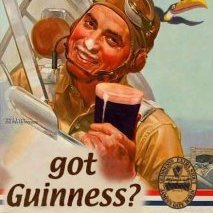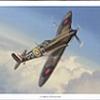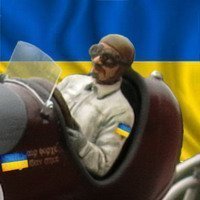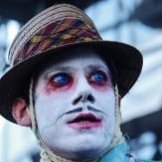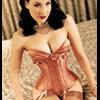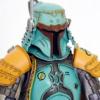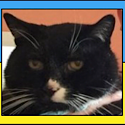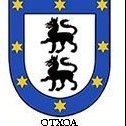Leaderboard
Popular Content
Showing content with the highest reputation on 14/06/22 in all areas
-
Good day to everyone, I'd like to introduce my latest build. It's the good old Hasegawa kit with a few aftermarket tweaks. Aires exhaust nozzles, cockpit, gear bays and aux air intakes Eduard Sparrows, HARMs, ECM pod and wheels Hypersonic canopy details Master pitot tube QB FOD covers Speed Hunter decals I hope you like it. Greetings from the Czech Republic. Andrew32 points
-
I finished this one last year, and it was one of my first models since coming back to the hobby. It was one of the first ones I had on my list because I've always loved the Mosquito. I plan to build another in a larger scale with a lot more detailing, but the Tamiya kit was pretty well made, in my opinion. The whole thing was painted in Tamiya paints and then weathered with Abteilung oils. I still have to do something with the base, though. Needs a bit more grass or something...31 points
-
Hi folk's,more from my youngest who's outstripping me in the rate of building,much better eye for detail than me in this scale he modelled the old Hasegawa Flogger in Indian colours. Model number six I would say his best to date Special Hobbies Mystere. And the off the wall Berkut. If you missed them here's the first two.He's moved up to 1/48 scale with Trumpeter's Jf 13 Thunder and has a big ICM Foxbat in the wings. https://www.britmodeller.com/forums/index.php?/topic/235110464-new-kid-in-town/25 points
-
With today being the anniversary of the recapture of the Falkland Islands, I thought I would post up my Sea Harrier. The Airfix 24th scale Harrier has been around since the early seventies. It was re-issued with new parts to allow it to be built as the FRS-1. For it's Size it is a basic kit, with basic detail in the cockpit, and other detail sacrificed for working features. I decided to have a go at updating my model. I got hold of Flightline's extensive etched set plus some resin parts from Heritage aviation. Heritage aviation's stuff was a big disappointment! Poor casting finish, rough surfaces, air bubbles and the mould were obviously past their best. The Intakes and wheels were all I used. The rest of the details were scratch built. I completely scratch built the ejector seat and I used the 2D etched part on the airwaves set for the nose undercarriage plumbing to make a 3D version from plastic card, rod and lead wire. The model was painted with Xtracolor enamels and the decals are the kits, representing a machine from 899 squadron which had been involved in three shoot downs during the conflict. Thanks for looking! Angelo23 points
-
Hi guys, It's been a while since my last time around here. Let me show you my Academy P-47B conversion. I reduced the fuselage lenght and removed its characteristic belly to make a genuine dash-B. This particular airframe was the only P-47B received by the Brazilian Air Force. Received as a war weary bird, after a few flights, it was grounded as an instructional airframe. My page does not have https, so you will have to trust me... http://www.ratomodeling.com.br/tmp/T1.jpg http://www.ratomodeling.com.br/tmp/T2.jpg http://www.ratomodeling.com.br/tmp/T3.jpg Hope you like it. Cheers Rato Marczak15 points
-
Hi everyone, here's my build of the excellent Tamiya kit - this was also my first kit using a PE set and friul tracks. Its sprayed with Tamiya acrylics and weathered with a combination of oils and enamels. Eventually I'll get around to building a base for it, but for now let me know what you think!14 points
-
Just a teaser. Published in the last issue of SAM. A dog of a kit from Amodel. 1/72 scale. For those modelers who truly enjoy sanding... http://www.ratomodeling.com.br/tmp/IMG_9708.JPG http://www.ratomodeling.com.br/tmp/IMG_9717.JPG Hope you like it. Cheers. Rato Marczak13 points
-
Evening all Finally managed to get this one over the finish line after an on-off-on build over the last 5 months or so. This is the Revell remould / rebox of the old Monogram kit which probably dates back to the 1970s? I picked it up for a tenner at a model show so couldn't resist as it was a fraction of the price of the Academy kit. Granted its nowhere near as detailed but despite its age I think it holds up fairly well. I have always tended to avoid kits with raised panel lines but I treated this as a challenge to see what I could do using some preshade and weathering pastels. I'm not sure I've quite got the effect I wanted but it was good practice, plus I've a few other Monogram kits that I'm more confident in tackling now. Inspiration was from Squadron Signals excellent series on the colours and makings of the F-4, which I've had for almost 40 years. I just love the old C and D phantoms in the latter camo schemes and the Dayton Ohio machine looked pretty cool. I actually built a 1/72 version of this when I was about 18 (a very long time ago!) so have been itching to build a larger scale version for a while. Built completely OOB with decals pinched from a Hasegawa kit. Paints were Gunze Aqueous (which look a bit brighter in the photos than in real life) Anyway enough rambling....hope you like. Comments much appreciated.11 points
-
Hi all I finally finished a build Not great but just happy to finish something Finished very much OOB with Tamiya acrylics and a model master flat clear I would have liked more colour separation on the camo but live and learn The kit is basic but went together okay Decals were terrible Out of registration and absolutely like leather so plenty of Micro Sol and Micro Set to try and settle them down as best as possible but many still silvered up 🙄 Just a few photos Cheers Thanks for looking9 points
-
Some scaffolding and ladders, so that I can get to the top of my stash Mike9 points
-
Here's the next entry for my back catalogue, this is a 2020 build and a fairly emotive one for me. My Dad passed away the year before and my Mum had passed me his RAF veterans pin to look after, I just needed a suitable home for it as I didn't feel right wearing it myself having never been in any of the services. So I decided that since it's Dad's "fault" I got into modelling, incorporating it into the hobby somewhere would make more sense. I've been having nameplates engraved for my models, so I decided to do an extra large one to fit the pin onto. Choice of model, well an RAF pin can't go on a ship or tank can it, so that narrowed it down. Dad never really had a "favourite" aircraft, but was more fond of those that were around when he was in the RAF, Tornado, Harrier, Jaguar, Bucaneer, Victor and of course the Vulcan being described most often when I was younger. Since I'm a 1/32 builder, that narrows things down more for me, kits only exist for two of those at the moment and the Tornado is one of the kits I remember of Dad's that goes back as far as I do (there's only a few in his collection that were built before I had any interest in them). So having the Revell Gr.I in the stash, I went with that - as the scheme is the same as Dad's version. I enjoyed building this one, Revell kits aren't always super detailed, but I've never struggled to build a good looking model out of them (at least not the newer moulds anyway). Hope you enjoy. And the most important shot, with the nameplate and pin - apologies that the bottom line is a bit fuzzy, it lost it's clarity when I reduced the image size - it reads "For Dad and our shared hobby". I'll need to take another photo of it with it's little brother soon, Mum's packed away Dad's collection other than a few that are coming to live among mine, so I'll add a picture of the two together when it arrives.8 points
-
Recent Group-Build /Theme for Pittsburgh,PA,USA IPMS Club was the 80s. I discovered a Fujimi 1/72 Sea Harrier from our in-House Dealer(Pusher) and at $7.00 started down the Rabbit hole. Yes.. Resin Interior,Master Models Pitot and a second kit for Falkland Markings had me following the white Rabbit. Cut Canopy open,Added a few antenna, Opened up some vents and most challenging was dropping Engine vents for Ground Ops. Also Inserted some colored sprue for wing formation lights (Red/Green) Gunze Dark Sea Gray, GX-100 and Markings for HMS Invincible . Please note "007" how could I not choose this 😃. Most decals came from a recent Airfix release and they performed great. Thanks for Looking Comments Always Welcome Cheers Bill8 points
-
Since a couple of guys are working on Phantoms, including me, I thought I'd post some photos of my old Revell 1/32 F-4E. I completed this sometime around 1995, when I was living in Houston, Tx. A guy I met just before I moved from Sacramento, CA in 1990 gave the kit to me when I told him that I used to fly the Phantom. He had a garage full of the Revell 1/32nd kits, multiples of each. It's been sitting on my shelves, on display in all of my houses since then. It's a good 6 footer so it usually sits on a high shelf to avoid close inspection and little kids. The model depicts a jet from the 23rd TFS, 52nd TFW, Spangdahlem AB, Germany circa 1985. It carries a typical Wild Weasel training sortie loadout - 3 external tanks, the centerline being the old Royal Jet 600 Gal tank. We had only just started using the McDonnell-Douglas "F-15" tanks and usually reserved those for jets configured for air-to-air training missions. A Training AGM-45 Shrike on the right inboard and an empty TER on the left inboard. We always carried the Shrike on the right side to counter some of the weight of the ALQ-131 ECM pod hung from the left forward missile well. We didn't usually carry the AIM-9 rails on the inboard pylons for WW sorties, only for air-to-air, then maybe only one with a training AIM-9P, on the right pylon, inboard side. This was a raised panel line kit, most of which were erased by filling and sanding. (It was an old Revell kit.) I redrew the major ones back on with a pencil. I didn't know anything about rescribing back then. I probably wouldn't have tried to anyway. Again, it's a 6 footer. Both the 131 pod and the TAGM-45 are scratch built. I know the 45 was a shortened AIM-7. I think the body of the pod was balsa with thin sheet plastic panels. The end caps were probably missile bodies and the underside housing was some reshaped piece of plastic. I added the ARN-101 external modifications such as the doghouse antenna on the fuselage spine, as well as the TISEO housing on the left wing. (Another reason to carry the Shrike on the right side.) In the close ups of the forward fuselage I tried to show how the paint would wear off, first to primer, then bare metal, on the covers to the kick steps and the ladder steps. Also, the top edges of the left intake got worn down from the boot traffic. The right side hardly at all. All leading edges of the intakes, wings, pylons, and tanks were showing primer as the paint wore down from flying through rain and cloud. One other wear area was just in front of the Air Refueling Door, on the spine behind the cockpit. The door itself was usually pristine except for a little paint chipping on the leading edge. But the tanker boomers would routinely knock the probe onto the jet in front of the door when trying to stab the receptacle. We were on a night refueling once, it was a little rough (turbulence), and I could see sparks when the probe smacked the fuselage. When we landed I looked to see if there was any damage and that little rod antenna just behind the aft canopy was hanging by the wires. I don't remember what that antenna was for, but it didn't seem important. I made a stencil for the shark mouth and it was hand painted with a brush. The SP and tail numbers are from an old Micro Scale letters and numbers set. The white shadowing on the SP is cut from a white decal sheet. The 52nd TFW badge was drawn on with a sharpie pen. Stencils were from the kit decal sheet. Paints were probably Testors Model Master. Don't remember if spray cans, airbrush, or both. It's a big model in 1/32nd so I'm thinking it was spray can mostly. I did use Gunship Gray 36118, rather than the correct Euro 1 Gray 36081, because at the time I thought Gunship Gray was correct. It did look too light at the time, but age has darken it to look more correct. Anyway, I hope you like it. If you have any questions please ask.7 points
-
Beurling was recognized as "Canada's most famous hero of the Second World War", as "The Falcon of Malta" and the "Knight of Malta", having been credited with shooting down 27 Axis aircraft in just 14 days over the besieged Mediterranean island. In this aircraft he destroyed 5 enemy aircraft and damaged 2 more, in just 2 days. On 27.7.42, flying BR301 over Malta, destroyed 2 Mc202's, a Bf 109, with a Bf 109 damaged, and 3 miles South of Grand Harbour, a Bf 109 destroyed, and a Bf 109 damaged, and on 29.7.42 flying BR301,8 miles SW of Malta destroyed a Bf 109 . BR301 was originally finished in the standard 'Tropical land scheme' of sand, dark earth and azure blue, but was oversprayed with a thinned blue-grey (most likely USN upper surface blue-grey) while on the USS Wasp for the 'Calendar' delivery. This is the second of my triple Malta builds, a Special Hobbies Spitfire Vc 'Malta Defender'. It also required the fuselage lengthened, the tail assembly repositioned, and the wings moved forward. Build logs here: Part 1 Part 2 Painted with Tamiya acrylics in the TLS, decals applied, then oversprayed with the blue-grey, weathered with oils and pastels. Decals from the IPMS Canada Canadian Aces sheet. Hope you like, Colin7 points
-
Afternoon (or whatever time it is where you are) Just completed this little fella It's an Eduard 1/72 Dr1 dressed up to represent the aircraft flown by Richard Wenzl (588/17 for those interested in such things) 😉 Built out of the box since I've not put a plastic kit together for several decades. I did sand the various struts down as far as I could (In fact I went too far with the wing ties and ended up buying another kit to nick them from) The propeller is carved from laminations of plywood and the model is entirely painted in acrylics. (There are a few other details and in progress shots on my other DR1 thread which I won't repeat here) Rally enjoyed this one in a 'straining the eyeballs' kind of way and looking forward to the next one. . . Cheers Paul7 points
-
Hello britmodellers, Here is - finally - my interpretation of Saab's J 29F Tunnan based Pilot Replica's 1/48 kit. OOB and airbrushed (PE seatbelts were part of the boxing) except I didn't add the PE cockpit mirrors (nice but I kept marring the clear parts with gloss clear to fix them) and replaced the rear wingtip lights (nothing wrong with these) with a blob of clear paint and gloss to try that method for self-made lights. I didn't use the decals for the dayglo and yellow, they were painted. The build starded as part of the Nordic II 2021 GB. I'd like to thank Rich @trickyrich for the abovesaid GB, as well as Enzo @Enzo Matrix and Mike @Mike for repeatedly moving the build thread over the very long time it took me to finish it. Also, my thanks to @pilot-replicas for the relacement parts (guess who is clumsy enough to overturn the CA bottle on a subassembly when placing nose weights....). This was a pleasurable build of a very good kit. The NMF and weathering were a different experience. Not disappointed, even rather pleased with the result, considering it was my first sludge wash to do panel lines and weathering. I learned some lessons for next time. Here is the build thread: Many sincere thanks to all those who gave support during the build, for the build itself and some dire life circumstances that interfered. I wanted something not too shiny and finally it came out with maybe a quite too scruffy look. Well, pics better tell the truth: Thanks for watching. I hope you'll like it. Have fun yourselves and a nice day (modelling or doing whatever else you enjoy). Cheers. Pat.6 points
-
Now I'm not a spitfire expert, I just love them. The build experience was very similar to the Airfix one. But I thought Airfix did the rear landing wheel better, and better quality sprues. Revell's plastics are soft, which means I broke the antenna too many times that eventually I lost it, and I just shaved one from the sprue left. instructions are quite good, color booklet. The seat has photo-etch harness, and I had thought of leaving the canopy open. But the middle piece couldn't be placed on top of the rear piece without being too far up above. I really like how these tamiya colors turned out. I also tried the sausage masking technique for the camouflage. Due to me having a thicker paint than ideal, it resulted in some pooling at some of the edges. On the matter of markings and camouflage, it was discussed in another thread but I was hesitating whether to paint the yellow strip on the front edges of the wings. The AMO regarding new camo colors in ocean grey (among others, (sky fuselage band and spinner)) was later (July 1942) than what Revell said this plane was (April 1942). But yes they have been doing tests on these new camouflage colors since Aug 1941. So some squadrons have already painted them in this color, but the yellow strip was only mentioned in the Memo, hence they weren't on the plane.6 points
-
6 points
-
6 points
-
Hello e everybody After closing the fuselage I started detailing the landing gear and the rocket compartment; I think I will not make them extended as many do, but rather allocated in their location but with the doors open, in the meantime I have done a minimum of detail In this photo you can see how the beautiful delta wing glued to the fuselage completes all the beauty of this aircraft; it was not a walk, some putty was used, some Tamiya, some Ammo acrylic and Mister Surfacer; the trolley and rocket compartments are all interior green. A detail of the trolley compartment, then I will start washing in this area At next Ettore 🇮🇹 🇺🇸6 points
-
Nearly there!!!!! Everything is now painted (apart from a missed fuel pipe on one tank, which I replaced today). Later I will get it all varnished in preparation for weathering etc. I like to leave my models a week for the varnish to dry. If not the Flory tends to stick. Once weathered etc she will get assembled and it will be on to the next one Martin6 points
-
Hi all; Just finished this one a couple of days ago in time for the anniversary of the event it commemorates. The WIP is here: ...and I am much indebted to all who encouraged and guided me on this one. The Coles Notes version is I didn't know what I didn't know about the short comings of the kit and several whose expertise and knowledge is far greater than mine helped me produce a much better result than otherwise would have been the case. I used the Eduard External PE Set, though I must admit that I didn't use all of it. I thoroughly enjoyed this one and plan another in the not-too-distant future. The pics... Cheers.6 points
-
Bit of time this morning so I started practicing the masking on mine: Tools all over the place. This is the bit I'd been dreading: I may use Oramask on the anti-glare I think. Later.6 points
-
We;;, here I go again. I usually don't have much luck on these Group Builds, as something always seems to come up to get in the way. However, this time, it's one of those that I've been wanting in the collection, so we'll see. I seem to recall that Linbergh or someone had done one of these in a larger scale, back in the late 50's, but I'm not certain. I was originally intending to build a YF-100, but then I ran into JohnR's beautiful build HERE and I was a little bit intimidated. So, I decided instead to build another seldom-seen model, the short-tailed version of the first few F-100A's. The YF-100 had a taller tail, but when the F-100A went into production, they thought that shortening the height of the tail would enable it to go faster. Don't know how that worked out, but they created deadly handling problems! Eventually, the tall tail was brought back, and one foot of extra length was added to each wing tip. This solved the handling problem, and became standard on the later "A" models, as well as the rest of the later F-100's. As usual, I decided to use the Trumpeter kit, in this case the "C" model. Accompanying the kit will be a Rob Taurus F-100D canopy, intended for the Italieri kit, plus an Aires F-100D cockpit set: As with my other F-100 builds, there will be a lot of kit carving and grinding, so here goes! First up, the proverbial incorrect nose. Laying the model atop the drawing in the "F-100 Super Sabre In Detail and Scale Part 1", by Bert Kinzey, I determined where to cut the kit so that adding my resin copy of the Esci F-100 nose would end up leaving the model at the correct length. I then made the cut(s): First the nose, then the tail: *** EDIT *** Further down this build article, I discovered that I cut off the top of the tail on my model, way too much. The correct dimension should be measured along rear edge of the rudder/vertical stabilizer, and should be 28mm overall. You can see where I added the length back with plastic card: Remember, it should be 28mm ALONG the read edge, NOT vertically as shown here. (Couldn't figure out how to get Photoshop to dimension along the angled line!) Therefore, the next several pictures that show the tail end will feature the incorrect, way-to-short vertical stab. They will be corrected later in the article. *** END EDIT *** Don't get relaxed yet folks -- the carnage is far from over! Next up, a few more things on the fuselage: The "L" depicts a piece of lead added to the nose, perhaps a quarter ounce. Next, the arrow on the left shows the area on the cockpit side that has to be thinned, to get the Aires cockpit to tuck in under the sill. The next arrow, simply reminds one to select the air brake innards with the narrower gap. The one in the kit with the wider opening was used on later variants, when they added a center-line bomb rack. The arrow at the back end shows where I removed the rearmost molded ring, designed to hold the jet exhaust assembly into place, but removing this ring now allows the entire assembly to be added later, a great boon to painting! Now, I'll separate the Rob Taurus canopy from it's backing, using a scriber first, then a few thin cuts with a number #11 X-Acto blade. I find the PE parts scissors very useful on canopies sometimes, because the blades are thicker and don't deflect as much. The very thin razor saw also make life easier: The sides are best scored and the flexed back and forth to remove, while the waste between the front windscreen and the rear canopy is best sawn apart. This canopy was designed to be built opened, so you don't have much choice! Next, the sanding block is carefully removed from the Aires cockpit tub, after which the tub is assembled, up through adding the instrument panel back piece, and the cockpit sides. The "X"'s show where the cockpit tub has to be sanded to fit the fuselage, as well as slide under the canopy sills: Care must be taken not to over-sand here however, as the ultimate goal is to precisely make the taped-together fuselage halves the exact same width as the Rob Taurus windscreen (windscreen show here slightly askew for the purpose of illustration). The arrow (above right), shows where the cockpit tub fits under the cockpit sill. The width at the rear of the cockpit will be address later. Also note, above left, the the instrument panel back piece sits BEHIND the vertical wall edges on the tub, and atop the center console. The instructions are not real clear here. Well, that's enough for a start. More mayhem to follow, anon... Ed5 points
-
Since I started the VW van, I got to thinking that the processes for this one are very similar. It mostly involves paint and decals, although there's a bit more detail on the insides here. Without further ado I give you the Aoshima Star Kebab Move Terrace This is the same sprue shot as the VW. The Subaru are the first block on the "drying rack" FYI, no chrome plating was harmed for this build as there were none in the box. This kit has both decals and "papercraft" (The Eggplane Girls are for the VW) Main painting work can only be undertaken at weekends as the workbench doubles as my office during the week, but I should be able to crack on with some of the sub-assemblies between now and Friday afternoon. Concurrentl builds!. I must be totally loopy More soon(ish) /P5 points
-
Hello everyone here on the forum. This is my model number 2. The basis is the ACADEMY 1/35 kit. Eva, Czech Republic.5 points
-
With my Voodoo waiting for paint, I made a start on this, the plan being to paint them together as both are in air defence grey. Will be using a pilot from PJ Productions 1960 NATO set. The cockpit as supplied is simple. The kit has few parts and is a simple build, got carried away and before I knew it I had this. Pilots painted.5 points
-
Thanks Simon, Thanks Chris, too kind, As Eric Idle once, so eloquently, put it. Say No More! I'm fairly pleased with the results but I'll leave things until tomorrow and see if it needs knocked back a bit. Thanks for looking, Cheers, Alistair5 points
-
This the third Italeri 1:32 Starfighter and I think it is an excellent kit. II've wanted to do a Spanish version for some time and am pleased with the result. I added Eduard cockpit detail and masks but otherwise it is all OOB. I used Revell enamel for main ADG colour and Alclad for the meta parts. I haven't attched the wing tanks permananently as I quite like it without them - I have shown photos with and without below. Big thanks to MikeC who kindly sent me some decals after a cock up! Also thanks to other memebers on here for help with the colour for the main colour - appreciated. I have an Italeri 1:32 F104 A/C to do although I might see if I can swap that for a 104G so I can do a Belgian or Dutch Starfighter.5 points
-
Flory Dark Dirt wash applied, Now ready for some of this. Thanks for looking, Cheers, Alistair5 points
-
A totally new experience for me with this Pavla 1/72 Miles messenger. Made for a Miles aircraft enthusiast friend of mine (who has flown in this aircraft). My first exposure to 1- resin parts, 2- Pavla kits, 3- metal parts. Not a very easy kit to build with adjustments needed from shortening the middle fin, & remaking flap hinges to thinning the fuselage sides so the cockpit actually fits! Also you need to make your own exhaust and gear struts. A couple of useful threads on here helped me along. KIN small. by @TEXANTOMCAT and G-AKBO by @Army_Air_Force From this experience I’ve concluded I’m not a huge fan of resin, hate vac form canopy and Pavla are to be avoided. So here she is.5 points
-
I'd never thought of that John (said nicely) Have a good day at Drayton. Thanks johnny - absolutely! Models? Here you go: Woody's I think. Fritag's Spitfire Johnny's Mustang, Giorgio's Mustang and I think Woody's? The General's Lightning and Tom's B-17s. Most have been RFI'd here (except perhaps Tom's two B-17s in the last pic) and I wasn't watching who brought what so if I've mis-labelled them, sorry.5 points
-
Quick update, painted the radome (I'll be weathering it further down the road, for now it's just a semi-gloss black), did some touchups to the camo scheme and started decaling the undersides. These early F-4C's retained their Navy style gloss white undersides, along with about 200 servicing / warning stencils. The only thing the Airforce did was to overpaint the large national insignia and "USAF" on the lower wing surfaces. On more than a few jets, you could still make out these marking under a thin coat of white. I did my best to replicate that look. I've only started to add all the servicing decals. Thanks for checking in!5 points
-
More, slow progress. Pretty much done with the interior now: The rear observer seats will do the trick when viewed through the windows. Close up of the sensor station workstation and seats which will be barely visible through the windows but noticeable it not there at all. Lots of weight to make sure she's not a tail-sitter! Hopefully it's not so much the Aeroclub gear collapses under it... Sonobuoy storage rack. Unfortunately, this isn't as good as I'd hoped when viewed from above but looks much better than the void that was there otherwise! Fuselage joined. Lots of gaps on this; partly due to the add-ons and partly due to my incompetence. Looks like a fair-sized filling and sanding session coming up - my least favourite part of the hobby. Although I had intended to rescribe this, I don't think I will. The detail on it now is very fine and I quite like it the way it is. I lost some bits that popped off during the joining of halves - you can see the Bomb Bay Pylon next to the model that will need to go back in, along with the other small bits from the nose observer's station. Next in line, while the fuselage dries, are the Plus Model flaps. Some exquisite fine detail in this kit! Lots of tiny ribs to add to the etch base - watch me stuff it up! Looking at @Moggy's Argentinian P-3, I can see the main gear wells will need a lot of work. The flap kit may stop me doing as much as he did as it may well weaken the structure too much. I'll reassess when the flaps are done. That's all for this update.5 points
-
5 points
-
"The distances to pass between Europe and South East Asia were huge, ranging from 11,200 nmi and 12,500 nmi depending on the point of last departure and first arrival. The duration of the voyages reported from the U-boats ranged from 84 days (U 511) to 171 days (U 188). After the Japanese submarines had carried out already by and large two-way transport missions between the Far East and German bases in occupied France as early as 1942, German U-boats were reassigned for that type of mission in mid-1944 as well, since the voyages of blockade breaking German merchant vessels between Europe and South East Asia and return to had to given up at the end of 1943. Ultimately, U-boats were the last remaining means of direct communication between the war allies Germany and Japan, in particular for shipping war essential material." --http://dubm.de/en/the-voyage-to-the-far-east/ I've been making some rapid progress lately, and managed to finish adding the all details to the upper fairwater except for the railings and guns. The UZO was particularly challenging, but I love the added details: And a couple of perspective photos: Cheers, Tom5 points
-
Brief update, just to prove both it and I are still knocking about! As promised last time, decals on, panel line wash done, matt coat down, tools painted and OPR started of. No promises this will be "properly" completed by the end date but at least it'll look something like 🤞. The finish is something of a WIF so quite happy using this as a test bed for trying out different techniques with oils and pigments. Enough of the excuses the pics: Cheers Darryl5 points
-
The fit though of the fuselage halves leaves much to be desired. I ended up cutting all the locator pins off. they didn't want to match up properly. Which means, you guessed it... filler. So 15 min later and a lot of masking tape I used my white auto body filler to fill the seams. This build surprisingly has very fine engraved panel lines and rivets. so the masking tape hopefully will cut down on any re-scribing. I'll let these dry overnight and sand down and prep for painting. One Thing I'll have to scratch build is a pilot seat. Seems like one has decided to go on walkabout in the never-never.5 points
-
However, I certainly do expect (but rarely get) an informed view of the accuracy of the model. If someone is presenting something in public, the quality of it should be considered by the modeller before the build starts, and known flaws should be pointed out. Otherwise readers will take errors as gospel facts, and these get cascaded down through the years.. Any other approach is sheer laziness and disrespect to the audience. The quality of the magazine does indeed have something to do with the standard of the kit, if flaws in these are not made clear. There's much more to modelling than pretty painting, a lack of visible seams or fingerprints in the paint, wrinkles in the transfers. The resulting kit does have to look as much alike the intended subject as possible, within the skills of the modeller. It can't do that if you start off with inbuilt problems that are not recognised or addressed,5 points
-
I've been busy in the garden. No bomb craters but someone did give me the bloody shovel! Finally got some paint on the Einkels and I don't think they look too bad considering (my lack of skill). I do like these new Tamiya Lacquers and Mr Color Aqueous Paints (after failing yet again to apply Vallejo Metal) . They lay down rather nicely. Lacquer thinned with levelling thinner and some thinner and retarder (Daler and Rowney) added to the acrylic. I find it prevents clogging to retard a little. I sprayed several coats of Mr Color Gloss and then a coat of Humbrol Gloss (I do like Humbrol gloss). I rather like her in this striking Silver Blue and feel the Merlins look okay to my wonky eyes. Makes a striking comparison to the German Heinkel.5 points
-
PK-114 Lightning F6 XS901 5Sqn. Painted with AK Interactive Dark Sea Grey, Valljeo Dark Green and Xtracrylix Silver and finished with Xtracrylix Gloss varnish over Windsor and Newton (definitely not) Satin. [8-A1-DFCE9-9-CC0-442-E-881-B-43-FB808-B2423.jpg]5 points
-
Here is the first Heller 1/24 Renault Estafette of hopefully a small batch I want to build. It took several years for the kit to actually appear after it was announced; but when it did appear it's actually a very good kit overall. Although the feature of moulded in windows in clear body panels I find quite annoying, adding problems to masking and painting. There are a few other details that can also be improved, but everything fits together really well and it was mostly a joy to build it. This one is built as a later style 1973 model almost straight OOB except for some minor tweak and detail added and the Banania decals from MotoBitz. The body paint is automotive lacquer spray decanted and airbrushed. There is a WIP-thread to be found here.4 points
-
Gday all. I haven't had much output this year so opted for some low hanging fruit to get some enthusiasm going. This come from the two in one boxing of the Firebee kit from ICM, a mate built one of them and then gave me the other to build. That was three weeks ago and this is about a days worth of work. It's a really easy kit with maybe a dozen parts. The new ICM decals are fiddly to use so be patient and use lots of water when placing them. I wouldn't recommend using any setting solution when laying them down as they won't want to move if you do. This proved to be the case when my mate built his and wanted to do it up in this scheme. He tried using the mission markings only to have them to stick almost instantly in their position. Hence why I've only got half of the misison markings as Keith used them in his first attempt. All the paints are Tamiya lacquers and the panel wash was from AK??? The satin varnish is from VMS whose stuff I have come to love over the past 12 months. Their flat coat is DEAD flat. Here's the finished product, I need to make a more appropriate stand as this one was knocked up with a bit of brass rod and box square. Cheers, Mick4 points
-
Renault UE-sWG 40 / 32cm Wk Fl Another model from my collection, the German conversion of an originally French artillery tractor to a rocket launcher. Model made by Mirage-Hobby. Painted with a brush, I didn't use decal softeners back then.4 points
-
Sherman Mk l Northamptonshire Yeomanry . Normandie Summer 1944.4 points
-
Member Graeme H was a frequent visitor to the UK and especially to Telford. Unfortunately we lost Graeme at the beginning of 2021. He had a lot of friends here and I was encouraged to post: On behalf of the Harris Family and the Sunbury Area Modellers Group (SAMG), we are pleased to announce the inaugural “Graeme Harris Modelling the RAAF, RAN and AAAvn Encouragement Award” to be presented at Scale Model Expo 2022 (this weekend in Melbourne, Australia. SAMG was created with Graeme in what would be he last visit to Melbourne in 2019. He lived over two hours flying time away in Townsville. He was always encouraging and helping other modellers whether it be bits and pieces, techniques and where to find the things we needed. He enjoyed nothing more than seeing people make progress as a modeller. Members of the SAMG will select a model that did not receive an award and that is deserving of encouragement. The selected entry will be anything RAAF, RAN and AAAvn and will be announced during the trophy presentations on Sunday the 19th of June.4 points
-
Now that my two Matchbox builds and my M10 are nearly finished time to get cracking on the Olympic and the Challenger, both of which are really painting exercises. Black and pale blue on the port side and the pale plié on the starboard.4 points
-
I completed the Catalina's parasol wing float assemblies with Eduard photo-etched cladding. I can report the Eduard cladding fit extremely well on this 25-year-old kit and will give the model addition realism that I have tried to create from photographs. As you can probably guess I am planning to display the Catalina with the floats down in resin water as it might have looked while involved in a sea rescue of a downed pilot and crew. It was standard practice in the south Pacific during the war to have the Catalina crew at battle stations when they were in enemy occupied territory so the canopies would have been opened and the Bowning machine guns manned and at the ready during this kind of operation. The next step in the wing assembly is the engine detail for which I also have an Eduard kit shown below. From what I have read Catalina pilots kept the engines running while they were on the water, presumably so they could take off in a hurry if the enemy was approaching. Not being a pilot, I have no understanding of what is involved to keep an aircraft stationary with the engines running while they make the rescue attempt. However, I have seen this operation in movies, so it must be true, right?4 points
This leaderboard is set to London/GMT+01:00

